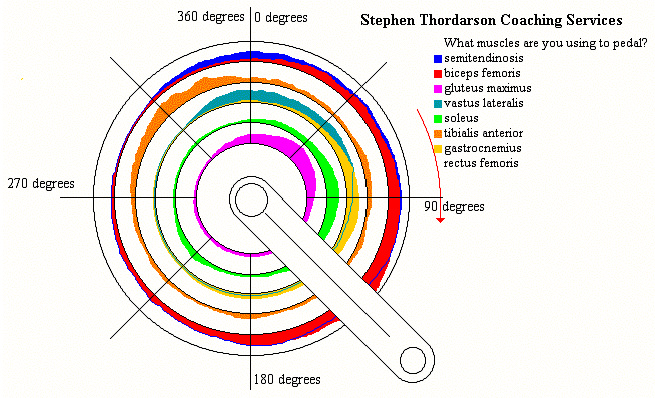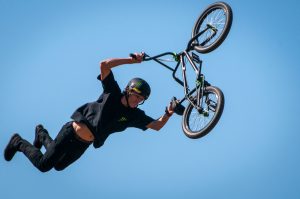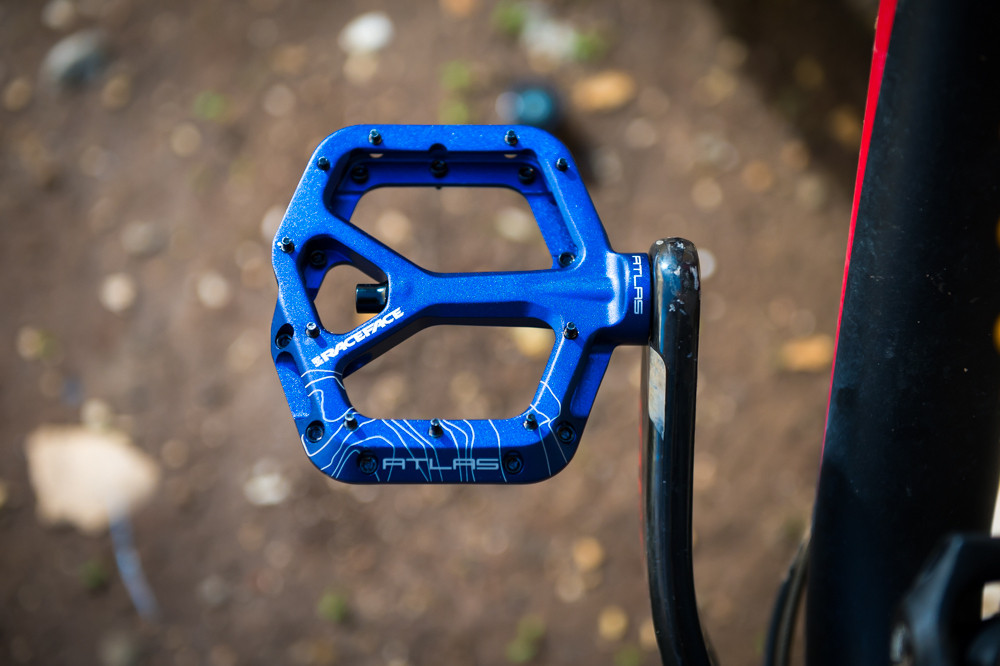When Mark and I started mountain biking about 25 years ago, mountain biking was not trendy. There were no mountain bike seminars, instructors, or clubs. Nobody went around announcing that they were demoing gear like 29” tires, extra wide handlebars, 1X chain rings, and dropper posts. You basically got a sturdy bike and a bunch of dudes in shorts and T-shirts and went crashing through the woods and just figured it out. There were lots of spectacular falls and injuries as a result, but there were no padded shorts and tight outfits. There were a few different brands of hard tail bikes around (that’s front suspension only, for those who don’t speak mountain biker) and maybe one downhill bike, mud tires and knobby tires, and pedals with the toe clips on the end to keep your feet in them; the point of these was to keep your feet from inadvertently slipping off the pedal during a key moment when you are off and behind the seat and you need to be on the pedals, i.e. landing after jumping your bike off a rock or clearing a log. So we all limped around with black and blue toenails and turf toe at the end of every weekend, and that was part of the sport.
Then, road bikers started to infiltrate the sport. Apparently schvitzing along in a spandex-wearing posse on long, boring roads with the threat of having your life ended by a misplaced pebble or a distracted driver (and this was even before texting existed!) was not exciting enough, so they brought us their padded spandex shorts and what are known as “clipless pedals.”
Let’s stop right here before it gets too confusing and define what we are talking about. The old school toe clips were basically a metal cage, also called a “basket,” that attached to your pedals and went around your toes. Clipless pedals do not have this feature, and require a shoe with a metal piece called a cleat on the sole with which you “clip in” to the clipless pedal. So even though they are clipless in that they lack the cage or basket feature to hold the pedal to your foot, you still are clipping into the pedal. And while we didn’t get turf toe nearly as often while clipping into the pedals, there were some pretty bad injuries on the left side of the learning curve as mountain bikers tried to figure out how to incorporate clipless pedals into our sport. Initially forgetting to unclip when braking to stop, or not being able to unclip fast enough to avert a bad fall were the big issues. Those who survived the initial crashes eventually got the hang of the clipless pedals. Other riders gave it up and went to ’80s style plastic platform pedals (by this time the toe clips had virtually disappeared) for less aggressive riding, mountain biker translation: “wimping out.”
So clipless pedals went from being a thing to the norm for mountain bikes, and we apparently were so brainwashed by gearheads that we accepted them; so much that when platform pedals started to reappear on the scene a couple of seasons ago, mainstream mountain biking was not only resistant but outright offended by them, with bikers declaring that clipless pedals are part of the sport, it is just as important to pull up on the pedals as push down, and that platform pedals are not “real biking.” What had happened to our people of the dirt?
The platform pedals of the 21st century, are not 1988 platform pedals; they are platforms, aka “flats” on steroids, covered with small spikes called “pins” that you wear with shoes with heavy duty soles to keep your foot from sliding off the pedal. You also can purchase a less aggressive model of pedals covered with little rubber bumps instead of spikes. The new platforms have held great appeal for bikers who are primarily downhillers and pump trackers, older riders who prefer less technical trails, and new riders who are nervous about clipping in. The face of mountain biking is changing, and a particularly wonderful change that I have seen in the past 4 years is the dramatic increase in the number of women riders on the trails. Yay for me!!! Now I have more girls to ride with! And what’s been interesting is that many of these beginner women are in their late 30’s and early to mid-40’s, interested in taking up a new sport but smarter, and more sensible and cautious than I was in my early 20’s following the guys off cliffs and over 6 foot log pyramids. And the souped up platforms are working out very well for some of them.

And at the end of last summer, after much soul-searching, hell froze over and I ditched the clips. The question of whether to clip in or not clip in is such a contentious, emotional topic in mountain biking, to the point that my beloved mountain bike training partner JV and I had a heated discussion over my decision that I think devolved to the level of, “You’re stupid!” “No, you’re stupid!” My decision was not the result of falls due to the clips; been there, done that, got the hang of it, it was no longer the issue. My decision was twofold: I’d had an autoimmune reaction to a virus during the first half of the year that caused a moderate amount of joint pain and swelling, and the pulling up in the clips felt like crazy compression in my knees and ankles. And because we have already established that I am a PT nerd, this phenomenon led to a careful consideration of the joint mechanics and other exciting stuff like the quad to hamstring ratio in biking. And I have determined that clips are not good for mountain biker mechanics for the following reasons:
- Clipping in throws off the quad to hamstring ratio. The normal quad to hamstring ratio is approximately 2:1. This means that quads should be roughly twice as strong as hamstrings. You will not overdevelop your quads and weaken your hamstrings if you are using platforms. Your hamstrings are a secondary mover and actually function to provide stability to your knee. During the pedal revolution, the purpose of the hamstrings is to eccentrically stabilize your knee during quad extension while you are pushing down on the pedal, then to help return your knee to the starting position again during the second half of the revolution. Using your hamstrings repeatedly to forcefully flex your knee to approximately 105 degrees, the amount of flexion needed for one pedal revolution, is forcefully flexing the knee in an unstable position, and also throwing off your quad to hamstring ratio, potentially weakening your quads over time. This combination sets you up for knee injury.
Your hamstrings still will get a good workout with the platform pedals. Using your quads to push down the pedal causes an eccentric (slow lengthening) hamstring contraction to control your knee extension as you push down, followed by a concentric hamstring contraction, where the muscle fibers shorten, to help your glutes extend your hip, also a very important part of the pushing down on the pedal. Ideally, you should be using your hips more than your knees. To summarize this gobbledygook, you don’t have to worry that your hamstrings will weaken if you ditch the clips. You in fact will restore a healthier balance to the muscles around your knee. - Shin splints or anterior compartment syndrome, anyone? Along with overusing your hamstrings to pull up on the pedals comes overuse of the ankle dorsiflexors, which flex your foot upwards. It is a natural instinct to forcefully flex your foot upwards to pull up on the clips, especially to attempt to aid your hamstrings’ efforts on the steep hills. Overuse of these muscles can set you up for periostitis, better known as “shin splints,” which ignored for too long can progress into chronic swelling in the anterior compartment of the leg, causing excruciating anterior leg pain and foot numbness. I treat these symptoms in somebody every summer and let me tell you, if you let it go too long, the rest of your riding season is screwed.
- Back mechanics! Nothing makes my skin crawl like watching a group of riders, all clipped in on a steep ascent, who all have a case of lazy ass—everyone in the seat, when they should be up off the seat with their weight forward to assist in their ascent. You don’t have to be a physics genius to have it make sense that when you are pedaling uphill and your ass is dragging downhill, you are increasing the amount of work that you have to do to get uphill. So there you are, slouched and flexed in the seat and forcefully cranking the pedals up with your hamstrings and what are we looking at? Exponentially increased force on lumbar discs, increased tension on sciatic nerves, muscle imbalances from your screwed up quad to hamstring ratio contributing to uneven pulls on your pelvis and sacrum…Come on everyone, up and out of the seat and use your quads and glutes! It is much harder to be lazy with the platform pedals. You will find yourself standing more and using the correct muscles more, which is better for you, and you also soon will be able to ditch the J-Lo booty padded bike shorts. I ditched those unattractive things years ago, mostly because I kept managing to catch the padded booty on the seat every time I lifted off the seat, which is a really awkward feeling, and frightful view for any riders unfortunate enough to be close behind you.
If anyone is interested in seeing what I think is an absolutely fascinating chart of the muscles activated during one pedal revolution, click here. And if you’re interested in reading more about this topic by a guy who totally agrees with me (and who really is an expert on this topic), read The Flat Pedal Revolution Manifesto by James Wilson.
So my better half surprised me at the end of the winter with a set of Race Face Atlas pedals (the blue pedal above the blog in the featured Race Face photo) and Five Ten bike shoes. I am told that any rugged, stiff shoe will do with the platforms except for a running shoe, which is softer construction for shock absorption and will not provide the adequate power transfer for biking. So far, I love my platforms. It took half of a ride to get used to balance without the clips. I think that during sharp turns at higher speed I had been hanging from clips for years. It’s time to shift my weight properly again! My knees and ankles feel great biking this season on the platforms, and I feel like my bike legs are back. A few comments on the new platforms: The pins have their own learning curve but wow, do you learn fast. My major mental block initially was that I am used to unclipping my right foot first and setting it down laterally to the right pedal. Clipless pedals are small. Platforms are a little bigger and bulkier, so the first couple of times I would unclip my right foot and accidentally set it down behind the pedal instead of to the side of it, and then promptly propel the right pedal with my left foot into my right shin. That only happened twice. Pain is a great teacher, and I also quickly learned to navigate quick stops or slight losses of balance on very technical terrain AND keep my shins away from the pedals like a BMX biker. I swear, by the end of the season, this will be me, trying to avoid gouging my shins again:

I have heard of two cases of bikers cutting themselves so badly on platform pedals that they needed stitches. I don’t know the exact circumstances, but I will also add that 16 years ago, I had 20 stitches in my left knee thanks to an endo and a rock (and clipless pedals). So that can just be the sport, no matter what gear you’re in.
Weight weenies argue that the new pedals and accompanying rugged bike shoes will slow you down by adding ounces. Unless you race, this issue really isn’t a problem. I do occasionally race and for me, it still isn’t a problem; I’ve always been of the opinion that if a few extra ounces threaten to destroy your times, then you need to step up your game. Besides, it’s become such a geary sport that there are now many different fun pedal and shoe options available. You should be able to find something that works for you.
I am a longtime dirt chick but not a passionate gearhead. Long studies and discussions of various gear options exhaust me. I just want to try out whatever will work well and to get the hell out of the bike shop and onto the trails. If you are equally clueless about gear, you need go no further than your local bike shop and ask someone there to show you some platforms that will work with your bike and to talk to you about shoes. If you find the topic absolutely enthralling, you always can go online to supplement your research. You always can find options ranging from low end to high end with prices to match (which is how I get completely overwhelmed). The PT in me must comment that I don’t believe that high end platforms will make a tremendous difference for most riders, and that it is more important to have good footwear. Good luck, have fun and see ya on the trails!
–Kathleen Doehla, M.S. P.T.

